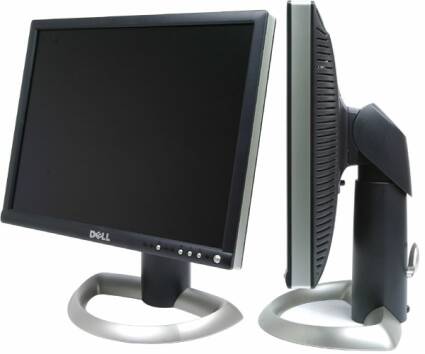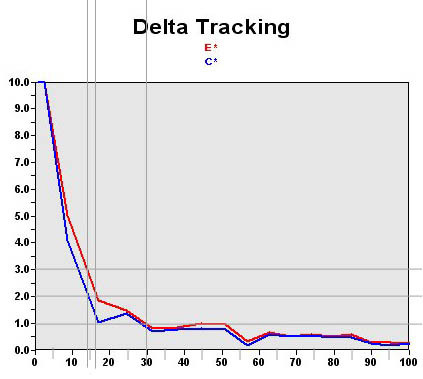LCD's 17" and Larger Reviewed
Dell 2001FP
Dell may not be a major LCD manufacturer but its 2001FP has made quite a name for itself since it came out a few months ago. Many were seduced by its attractive specifications: a 20" diagonal, 16 ms ultra-fast response time, 176° viewing angles and IPS panel.
Ergonomics
The 2001FP is expensive but it's well worth it. It's beautiful and feature-rich. It has a USB hub, an analog D-Sub input, a DVI input, S-Video and composite plugs. The monitor can be switched to pivot mode and its height adjusted.
Colors
Relatively expensive, the 2001FP has to provide great color rendering. And since it is aimed at demanding users, some of them professional graphic designers, we not only tested that capability at a classic color temperature of 6500K, but also at 5000K with a gamma at 2.2 (usual graphic design setting for PC, instead of 1.8 for Mac).
6500 K
By default, the blank is at 150 cd/m², which is a lot, for those used to a CRT usually set at 90 cd/m², and not much for an LCD usually set at 220 cd/m². This gives the monitor an enjoyable display right away, even if the black lacks a bit of depth.
Get Tom's Hardware's best news and in-depth reviews, straight to your inbox.
One issue is that users who want to lower the brightness, for a rendering closer to what their CRT offered, will do so at the expense of color accuracy.
It's good but not perfect. At 6500K, the first generation TN panels do better (see our review of the BenQ FP763 and Samsung 172X). The PVA panel in the 193P was also much more impressive than this one.
5000 K
This very high-end monitor's target user group should please graphic designers who like a color temperature of 5000K. They will surely be seduced by the impressive sharpness of the panel but the color rendering may disappoint them.
| Dell 2001FP | Default setting | After adjustment |
|---|---|---|
| White | 151 cd/m² | 130 cd/m² |
| Black | 0.55 cd/m² | 0.64 cd/m² |
| Measured contrast | 274 : 1 | 202 : 1 |
Interpolation
In this test at least, the 2001FP earns slightly better-than-average marks. To such an extent that not everybody will see a difference between the 1600 x 1200 native mode and the one below, 1280 x 1024. Below 1024 x 768, however, the decrease in picture quality is clearly visible.
Games
While it has specs that you can only dream of, the 2001FP is not a gamer's monitor. The afterglow is too visible. To get an idea, it's worse than monitors based on TN + Films, and these are often considered low-end products. Most MVA monitors, although 25 ms, also have a lower afterglow. At best, you can entertain the idea of a few slower games from time to time. Forget about FPS championship training on this.
Movies
Impressive! Of all the monitors tested, this is the one that displays movies the best. Indeed, this is one of the very few gauged to handle more than it actually can. Unfortunately, 24 bit (16.7 million color) monitors are now used to interpolate their colors at 30 bits. The benefit: In pictures, color shades are more finely tuned. The drawback: This dithering corrupts the video rendering. However, there was none of that in this case, which seems to indicate that this monitor only uses its own colors to display movies. And that's very good. The picture is so beautiful that it makes up for the bad response time during fast action scenes.


